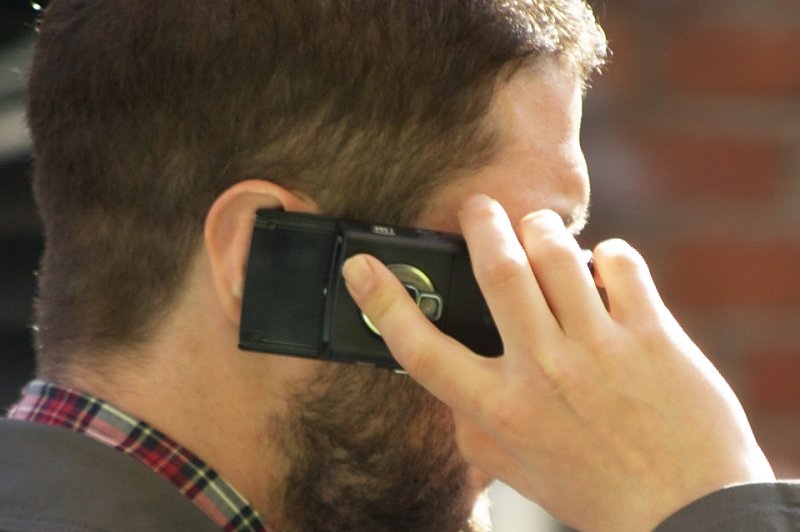Using your cellphone while walking or driving may be hazardous to your health, study finds. File photo by UPI
Dec. 5 (UPI) -- Smartphones don't come equipped with weapon apps -- yet -- but new research suggests the devices can still inflict bodily harm.
An analysis published Thursday in the journal JAMA Otolaryngology-Head & Neck Surgery estimates that as many as 4,000 Americans suffer injuries related to cellphone use annually.
These injuries include bumps and bruises from falls, and more serious internal injuries sustained during motor vehicle accidents.
"So many of these injuries happen because people are distracted," study co-author Boris Paskhover, a facial plastic and reconstructive surgeon at Rutgers-New Jersey Medical School and Newark Beth Israel Medical Center, told UPI. "Maybe they were looking at their phones while they were driving or walking down the street. That's how accidents happen."
Paskhover and his colleagues identified a total of 2,501people who presented to hospitals with injuries of the head and neck related to cellphone use, based on data from the National Electronic Injury Surveillance System collected between 1998 and 2017. They used a weight variable provided by the NEISS database to estimate the number of nationwide cases, which yielded the weighted national total of 76,043 cases of cellphone-related injuries over the 20-year period.
Notably, the highest percentage of these injuries, 41 percent, occurred in the home. Of the injuries, cuts or lacerations made up 26 percent of cases, contusions or abrasions made up approximately 25 percent of cases, and internal organ injuries made up just over 18 percent of cases. Roughly one third of these injuries were sustained to the head area, while another one-third involved the face, including the eyes, eyelids and nose.
"I've had patients come to see me saying they were walking down the street and looking at their phone and fell and broke their jaw," Paskhover said.
Worse, he and his colleagues also found that these types of injuries are occurring more and more frequently. Since 2007 -- "the year the iPhone was first introduced," Paskhover, said -- the number of people reporting cellphone-related injuries in the U.S. has more than tripled, even though many of them are likely reluctant to admit why they got hurt.
"Not many people are going to come into an emergency room after a car accident and say they were distracted by their phones," he explained. "Legally, they'd be opening a can of worms. Their insurance may not cover them if they admitted they were on their phone, for example. But they're usually not talking on the phone at the time. They are looking at the screens, using the apps."
In all, more than 56 percent of cellphone-related injuries documented in the study were reported by women, while nearly 40 percent occurred in teens and young adults.
The authors found that teens and young adults between 13 and 29 years of age, as well as older adults, were more likely to report "user distraction" as the cause of their injuries, while children 13 years of age and younger were significantly more likely to "sustain direct mechanical injury from a cellphone."
In these latter cases, Paskhover said, children may be "playing with their parents' phone and someone gets hit in the face."
The surgeon's advice for people who want to reduce their risk of these types of injuries? "Put away the phone until you really need it," he said. "And don't look at it while walking or driving. You wouldn't do that with a book or a magazine. People would think you were crazy. But it's the exact same thing."















